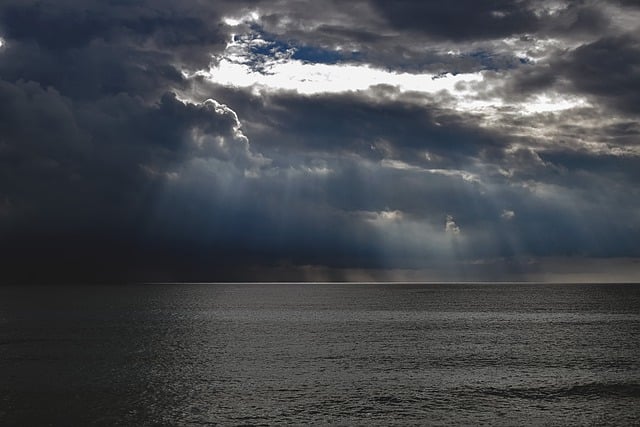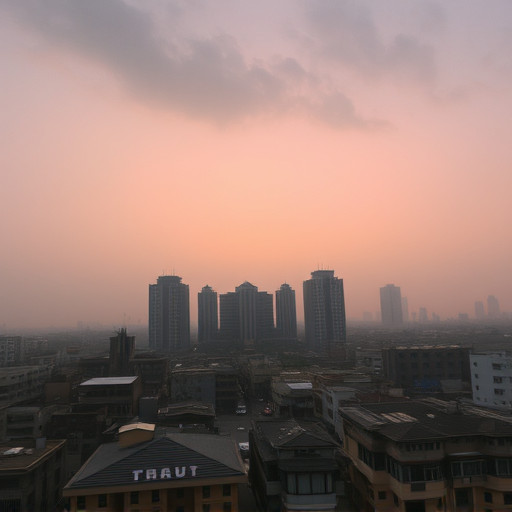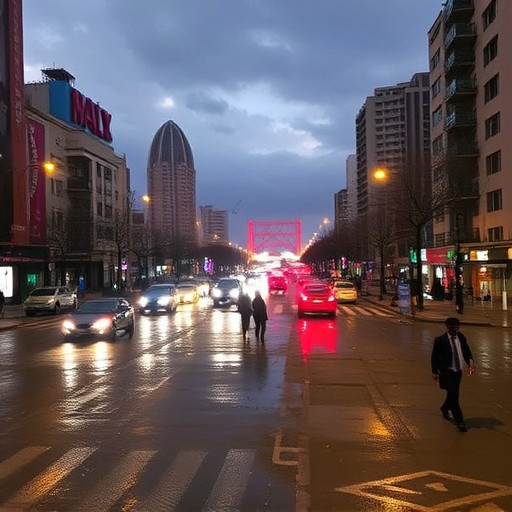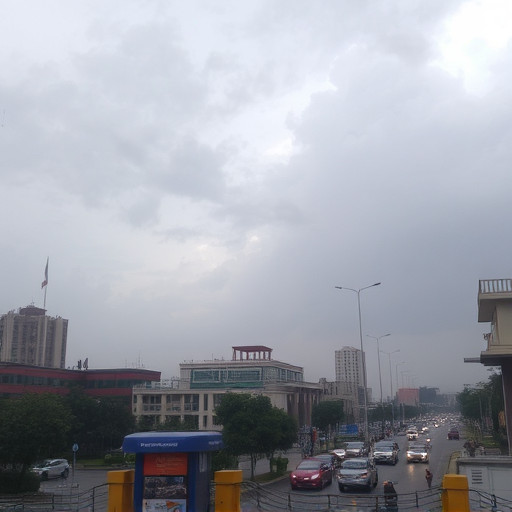
Karachi experiences a tropical climate with high humidity year-round, moderated by its coastal location. The city faces intense heat and humidity during the summer months, particularly from May to August, due to monsoon rains that push humidity levels above 70 percent. Annual humidity ranges from 60 to over 80 percent, with a slight increase observed in recent years. The dry season sees humidity at 65-75 percent. Karachi's high humidity affects both residents and infrastructure, increasing health risks, accelerating corrosion, and leading to higher energy costs for cooling. To mitigate these effects, urban planners are designing buildings with features that enhance natural cooling and promote green spaces. Residents are encouraged to adopt similar measures, such as wearing light clothing, staying hydrated, and using eco-friendly cooling methods. Public education campaigns emphasize the importance of understanding humidity risks, particularly for the vulnerable, aiming to improve living conditions and quality of life in Karachi.
Exploring the nuanced relationship between humidity and urban life, this article delves into the current humidity conditions in Karachi. As Pakistan’s largest city navigates its annual climate cycle, understanding the seasonal humidity patterns is crucial for residents and infrastructure alike. With a comprehensive analysis of recent humidity data and trends, we uncover insights into how this microclimate affects health and daily living. Furthermore, we explore the effectiveness of adaptation strategies and mitigation measures to address the challenges posed by high humidity. Join us as we shed light on Karachi’s unique environmental factors, ensuring a well-rounded perspective on the city’s atmospheric conditions and their implications for the future.
- Karachi's Climate and Seasonal Humidity Patterns
- Recent Humidity Data and Trends in Karachi
- The Impact of Humidity on Karachi's Residents and Infrastructure
- Adaptation Strategies and Mitigation Measures for High Humidity
Karachi's Climate and Seasonal Humidity Patterns

Karachi, located on the Arabian Sea coast in Pakistan, experiences a tropical climate with distinct wet and dry seasons. The city’s humidity levels are influenced by its coastal position and proximity to the sea, which generally moderates temperature extremes but maintains high humidity throughout the year. During the summer months from May to August, Karachi witnesses the monsoon season, where daily thunderstorms increase atmospheric moisture, pushing the average humidity levels above 70 percent. These months are characterized by intense heat and high humidity, making it feel particularly oppressive for residents and visitors alike. The wet season contributes to the city’s overall high annual humidity, with levels rarely dropping below 60 percent even during the dry season.
The dry season in Karachi spans from October through April, with December to March considered the cooler period. Despite being drier, the relative humidity remains relatively high, typically hovering around 65-75 percent. The prevailing southwest monsoon winds bring moisture from the Indian Ocean during this time, which does not fully dissipate despite lower rainfall. The city’s humid conditions are also affected by its urban environment, where human activities contribute to localized increases in atmospheric water vapor. Overall, Karachi’s climate is marked by consistently high humidity throughout the year, with significant variations only in terms of rainfall and temperature intensity.
Recent Humidity Data and Trends in Karachi

Recent humidity data from various weather monitoring stations in Karachi indicates a consistent pattern of high humidity levels throughout the year, with varying intensity depending on the season. The coastal city typically experiences high humidity, a characteristic influenced by its proximity to the Arabian Sea. During the summer months, the humidity can soar above 80%, making the heat more oppressive. The monsoon season brings occasional relief but also contributes to fluctuating humidity levels as the city receives its annual rainfall. Analysis of long-term trends in Karachi’s humidity suggests a slight increase, which aligns with global climate patterns indicating a rise in atmospheric moisture due to changing climate conditions. This trend has implications for public health, comfort levels, and the overall weather experience in the city, emphasizing the need for urban planning and environmental management strategies that account for these changing conditions.
The Impact of Humidity on Karachi's Residents and Infrastructure

Karachi, a sprawling metropolis located on the Arabian Sea coast in Pakistan, experiences varying levels of humidity throughout the year, which significantly influences both its residents and the infrastructure within the city. The high humidity levels, particularly during the summer months, can lead to discomfort for the city’s inhabitants, manifesting as stickiness, lethargy, and an increased susceptibility to heat-related illnesses. The human body’s ability to regulate temperature is challenged in these conditions, necessitating adaptations such as increased hydration and modified clothing choices to cope with the moisture in the air.
From an infrastructure perspective, high humidity presents its own set of challenges. It can accelerate corrosion processes in metallic structures, from large-scale constructions like bridges and buildings to everyday household items like cookware and bicycles. This corrosion can lead to costly maintenance and repair efforts, potentially compromising the structural integrity and safety of these facilities. Additionally, humidity plays a critical role in energy consumption patterns; as air conditioning becomes a necessity rather than a luxury, the demand for electricity rises sharply, putting a strain on power supplies and contributing to higher energy costs. The interplay between humidity and human comfort further underscores the importance of considering meteorological conditions when planning urban development and managing public health initiatives in Karachi.
Adaptation Strategies and Mitigation Measures for High Humidity

In Karachi, a megacity on the Arabian Sea coast of Pakistan, high humidity poses significant challenges to both residents and infrastructure. To mitigate the effects of high humidity, urban planners and architects employ strategies that promote ventilation and natural cooling mechanisms. These include designing buildings with wide overhangs, high thermal mass, and ample green spaces that provide shade and reduce heat absorption. Additionally, the use of materials such as ceramic tiles and light-colored paints reflects sunlight and minimizes heat buildup. Communities can also implement landscaping practices that encourage the growth of vegetation, which transpires moisture and cools the air through evapotranspiration.
On the adaptation front, individuals are encouraged to adopt behaviors and use technologies that help manage the human body’s response to high humidity and heat. This includes wearing lightweight, breathable clothing, staying hydrated, and seeking out well-ventilated spaces during peak heat hours. Air conditioning can be effective but is energy-intensive; therefore, alternatives such as evaporative coolers or ceiling fans are promoted to provide comfort without excessive electricity consumption. Furthermore, public awareness campaigns educate citizens on the risks of high humidity, particularly for vulnerable populations like the elderly and those with pre-existing health conditions. These adaptations and mitigation measures aim to create a more habitable environment, improve quality of life, and ultimately protect against the adverse impacts of high humidity in Karachi.
Considering the insights presented, it is clear that Karachi’s humidity plays a significant role in the daily lives of its residents as well as the integrity of its infrastructure. The data indicates a consistent pattern of high humidity levels throughout the year, with notable variations tied to the seasons. As adaptation and mitigation strategies are implemented, there is hope for better management of these conditions. Residents and authorities alike must continue to monitor humidity trends closely to ensure the well-being of the city’s inhabitants and the preservation of its structures.


